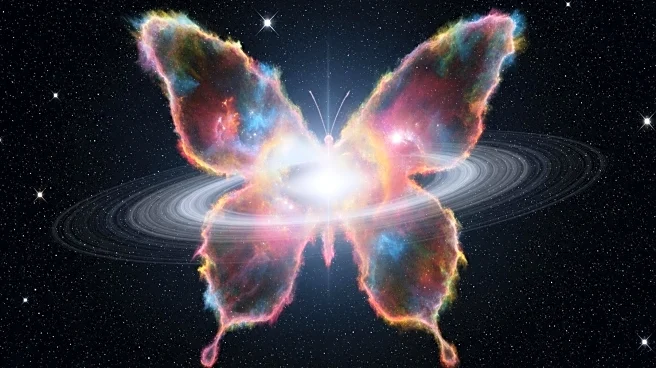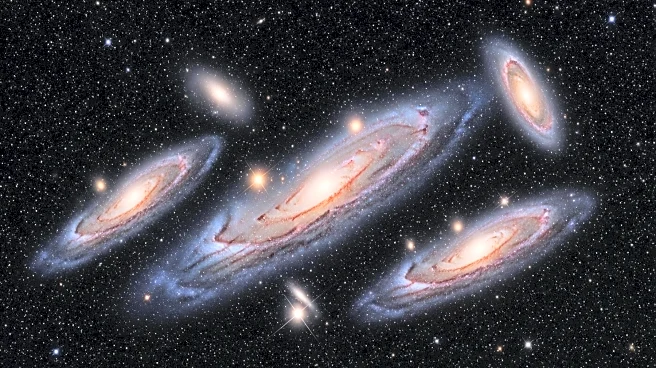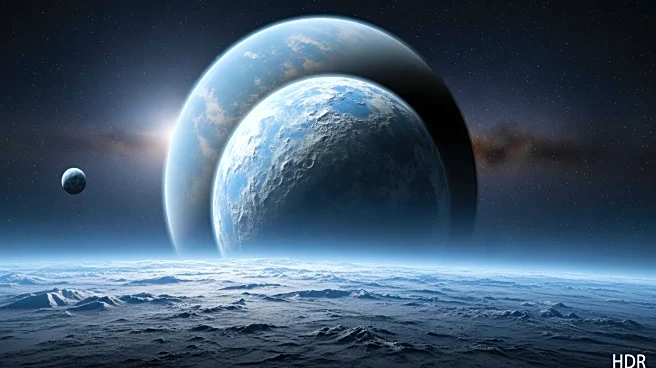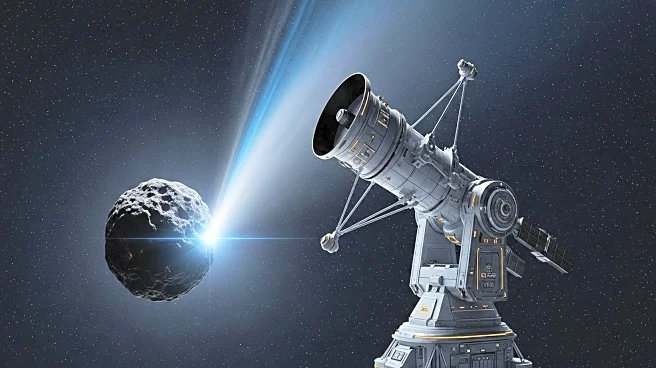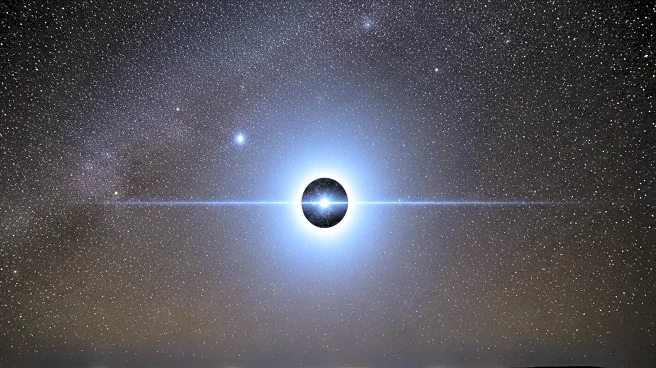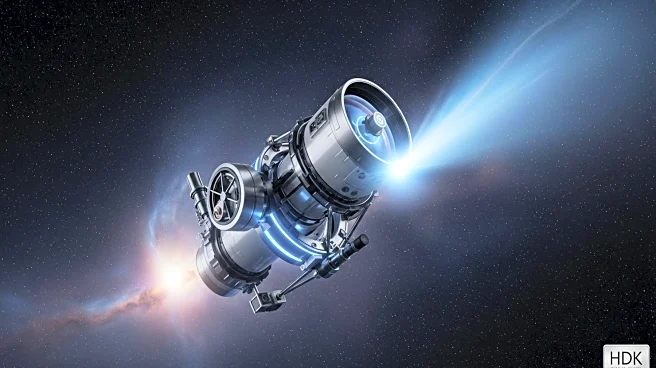What's Happening?
The James Webb Space Telescope (JWST) has captured a stunning image of a young star, IRAS 04302+2247, known as the 'Butterfly Star,' with its protoplanetary disk. Located around 525 light-years away in the Taurus star-forming region, the star's disk measures approximately 40 billion miles wide. The image reveals two reflecting nebulas on either side of the disk, providing a unique view into how protoplanetary disks evolve over time. Capturing a protoplanetary disk from an edge-on perspective is rare and allows astronomers to study how dust grains settle, grow, and migrate within the disk, offering insights into planet formation.
Why It's Important?
This image provides a rare and detailed view of a protoplanetary disk, crucial for understanding the dynamics of planet formation. By studying the disk's evolution, astronomers can learn how dust settles into larger layers, eventually forming planetary cores. This knowledge is essential for piecing together the puzzle of how planets form and evolve. The Butterfly Star's image not only showcases the beauty of space but also contributes to the scientific understanding of stellar and planetary formation processes.
What's Next?
Further observations and studies of protoplanetary disks like the Butterfly Star can enhance our understanding of planet formation. Astronomers may continue to use the JWST to capture more images of similar disks, providing additional data to refine models of planetary evolution. These studies could lead to discoveries about the conditions necessary for planet formation and the potential for habitable worlds.
